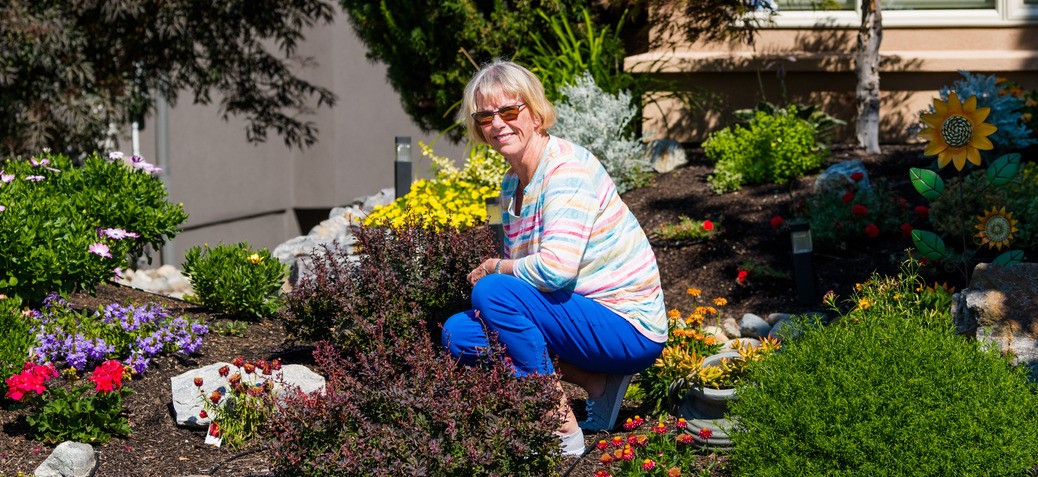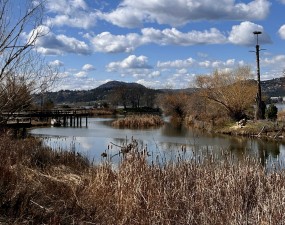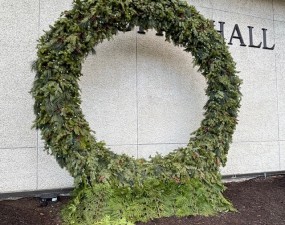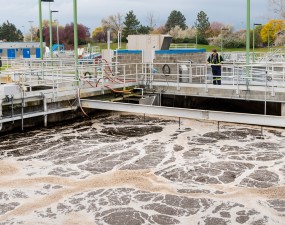Creating a water smart community
Topics
By Ed Hoppe | Sep 2, 2022
At first glance, it doesn’t look like much: a small backyard putting green, made of artificial turf and ringed with decorative pavers. But look closer, and you might notice something a little different. Hiding beneath the surface is a specially designed water storage tank that gathers rainwater via the eavestroughs affixed to the adjoining home. This blink-and-you-miss-it setup means that these Gallagher’s Canyon homeowners can irrigate their planters and flowerbeds entirely on their own supply: no municipal water necessary
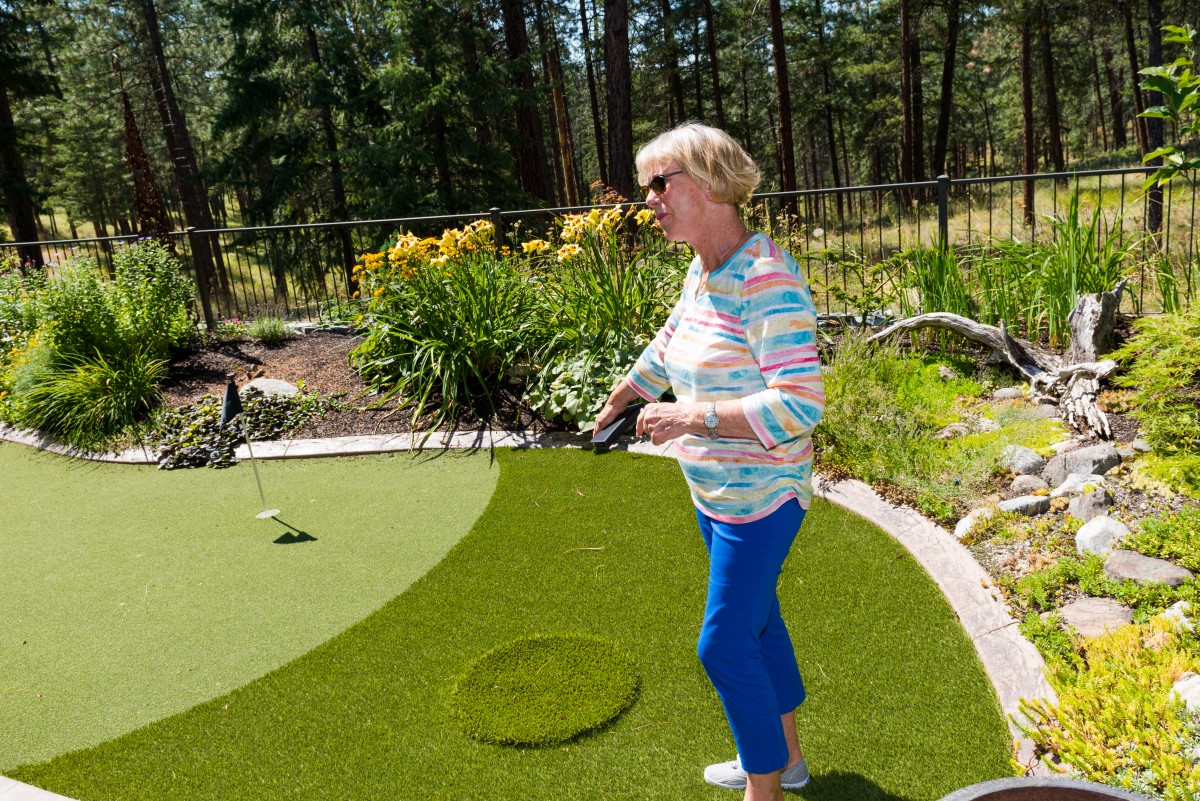
Gallagher's Canyon resident Margo Cuthbert highlights an underground rainwater storage tank installed in one of her neighbour's yards. The tank allows her neighbours to irrigate their low-water landscaping without using any municipal water.
A few houses down, another homeowner has swapped traditional turf for a striking stone and gravel scheme. Says homeowner Shelly, “we just didn’t want to be using and paying for all that water just for grass, so we gutted everything and went this way instead.” Backed to a striking natural forest that abuts their property line, the result is one seriously water-efficient--and very beautiful--yard.
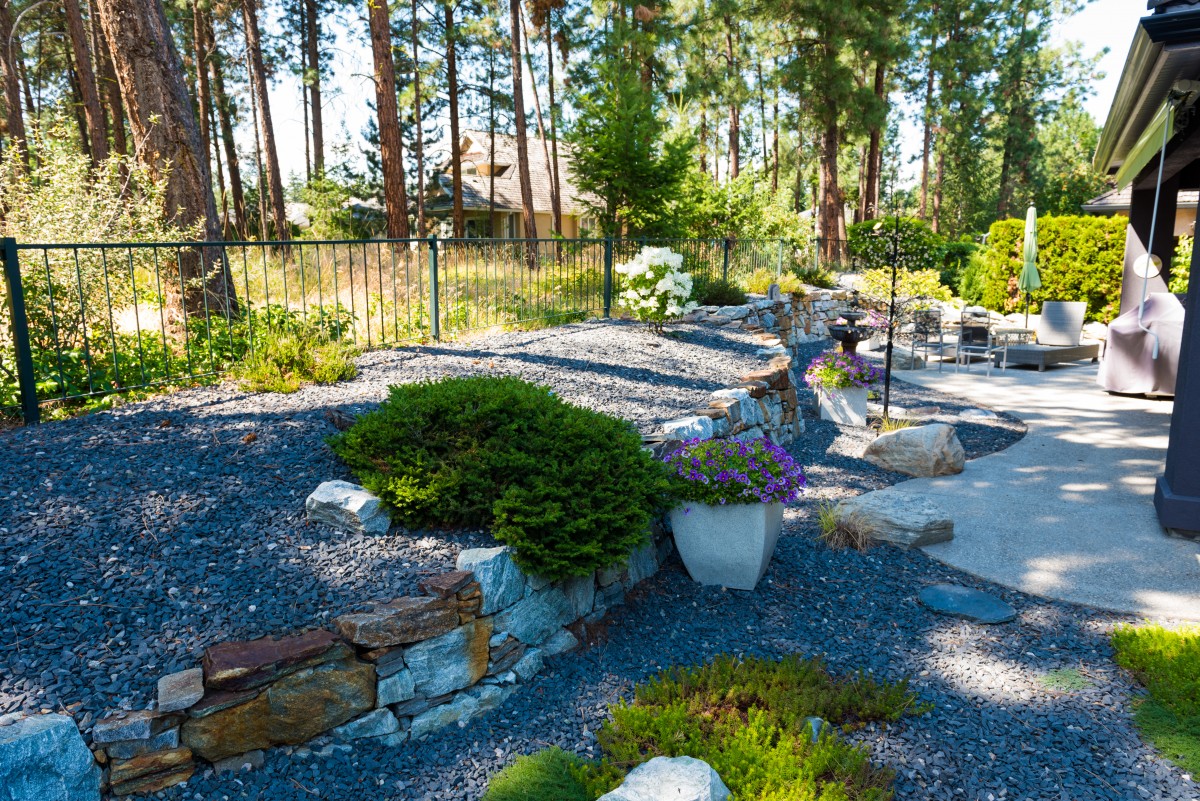
These are just two examples of how a group of neighbours in the Southeast Kelowna community of Gallagher's Canyon are working together to make their individual homes, as well as their whole neighbourhood, more water efficient. In late August, I was treated to a personal, guided tour of this water smart neighbourhood from one of Shelly’s neighbours, Margo Cuthbert. A self-professed water efficiency enthusiast, Margo serves as president of one of the many strata councils that comprise Gallagher’s Canyon. In that role, she’s taking a pro-active approach to conserving water, and she’s doing it all with a little help from her friends.
Originally from Scotland, Margo and her husband are no strangers to the pleasures of lush greenery and verdant gardens. But Kelowna, situated in the heart of one of Canada’s driest regions, is a long way from the rainy hills of Scotland. And that means taking a different tack when it comes to creating and maintaining one’s yard. “We spend a lot of time in Arizona, which of course is extremely dry,” says Margo. “But they’ve created ways of having yards and landscaping that are still beautiful and attractive, and I think we can bring some of that here.”
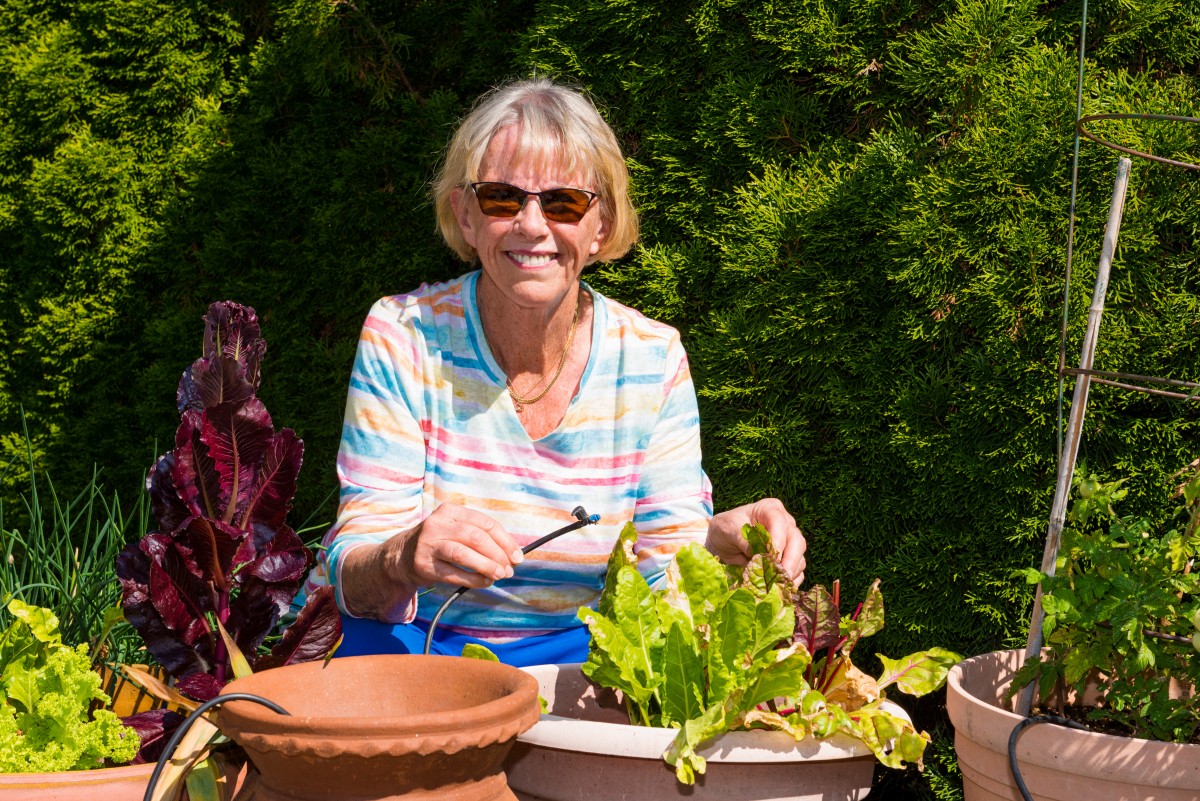
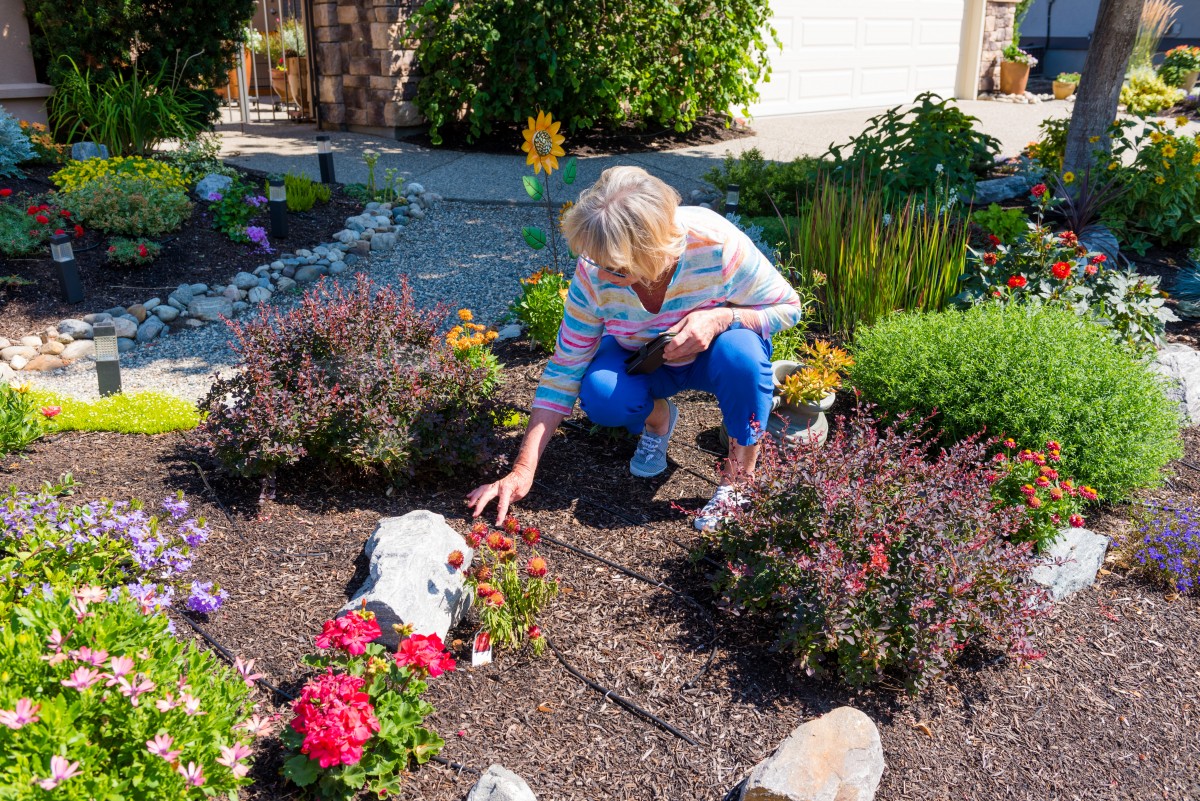
Left: Gallagher's Canyon resident Margo Cuthbert shows off the drip line irrigation system that keeps her potted plants and flower beds healthy and vibrant. Right: Margo highlights a similar system installed in a neighbour's yard.
Learning from her time in the Southwest, and drawing as well on the experience of living in Hong Kong, where water restrictions are a part of life, Margo has begun taking steps to make her yard more water efficient. Though there’s still some traditional turf in her backyard, she plans to scale it back and replace it with some stone landscaping and flowerbeds featuring low-water and drought-resistant species.
She’s already installed drip irrigation lines in her existing beds and pots to cut down on misdirected spray and evaporation. “I’m a painter and a sculptor,” Margo tells me. “I’m used to pouring one bucket of water and using that to wash all my tools, no running the sink for every piece of equipment. I think about water at home the same way: especially in Kelowna, you only have so much, so use it sparingly.”
While not all Margo’s neighbours have the same artistic background, they nonetheless share a commitment to paring back their water use. Showing me around her neighbourhood, Margo points out homes that have replaced their conventional lawns with synthetic alternatives, others with striking stone and gravel landscaping schemes, and still others whose planting beds are filled with beautiful native species well adapted to our dry Okanagan summers.
Not every home has taken the same approach, and not every yard looks the same. Some are more minimalist and pared back, while others are more raucous and varied. It’s a fantastic reminder that going water smart doesn’t mean giving up beauty or sacrificing your tastes. It just means working with a different palette and making choices that respond to the realities of life in the Okanagan.
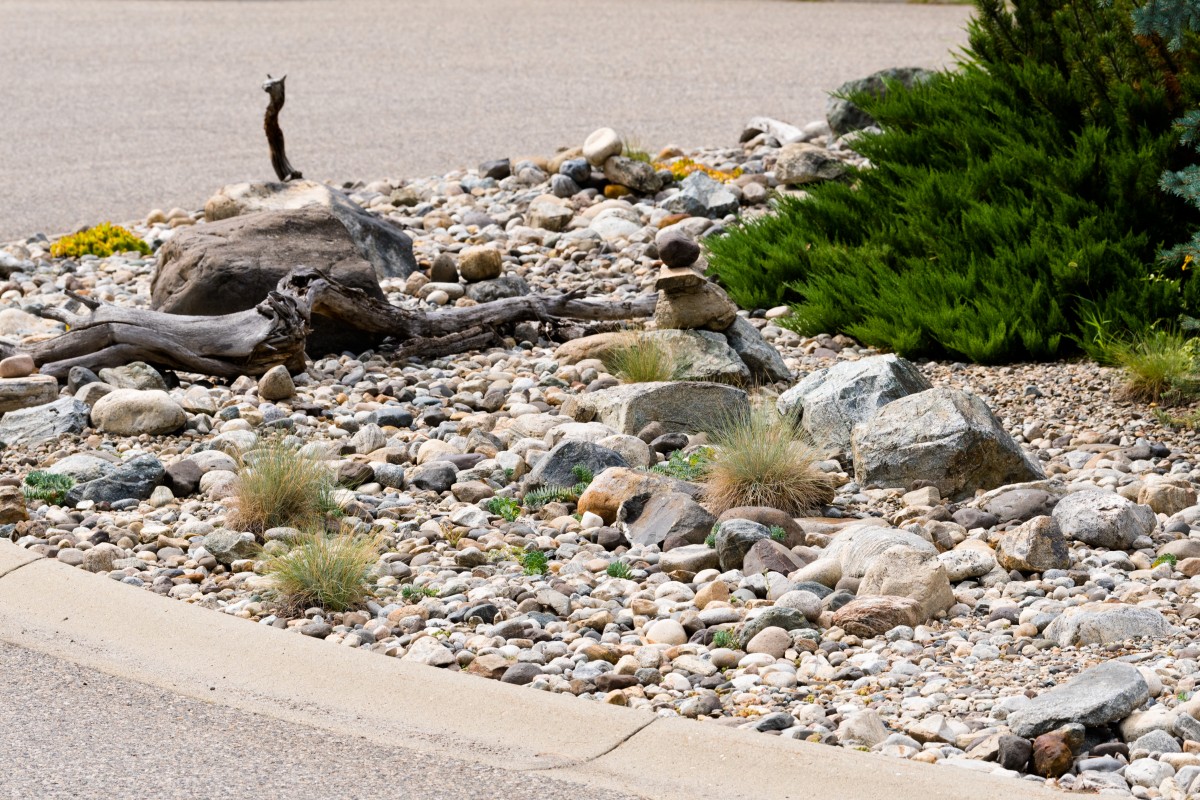
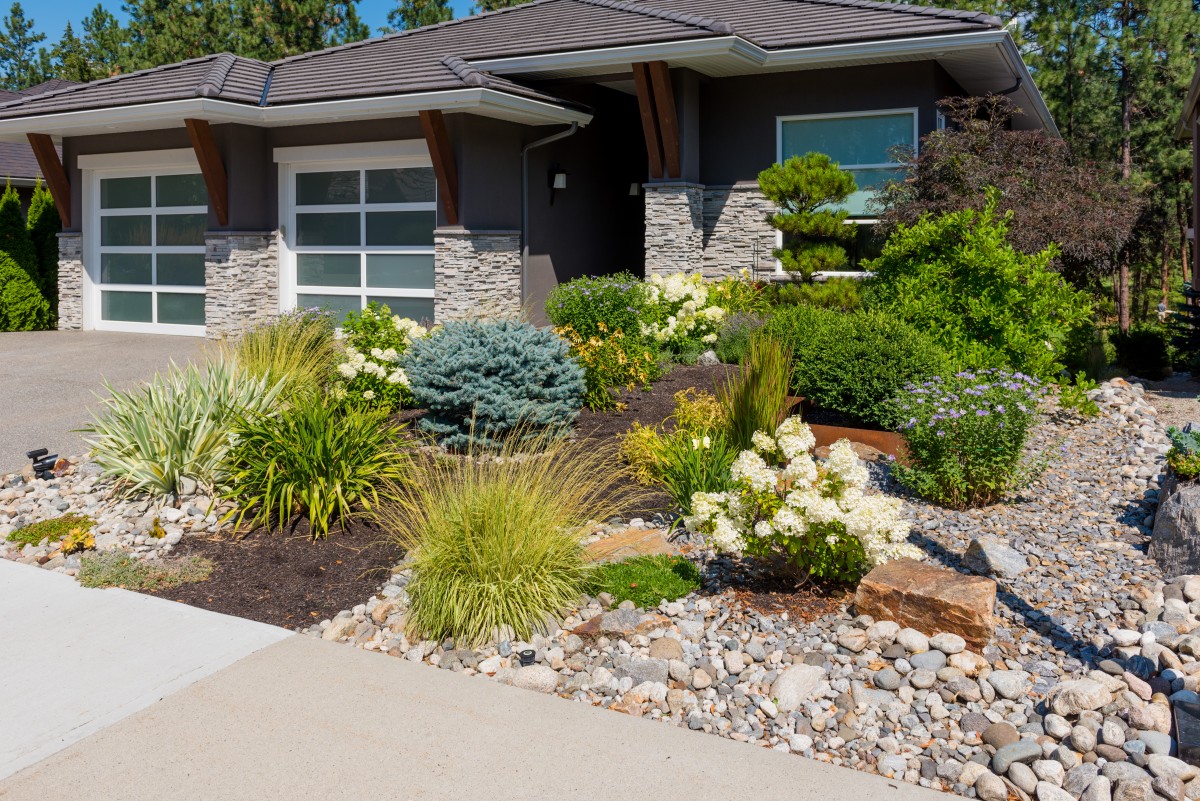
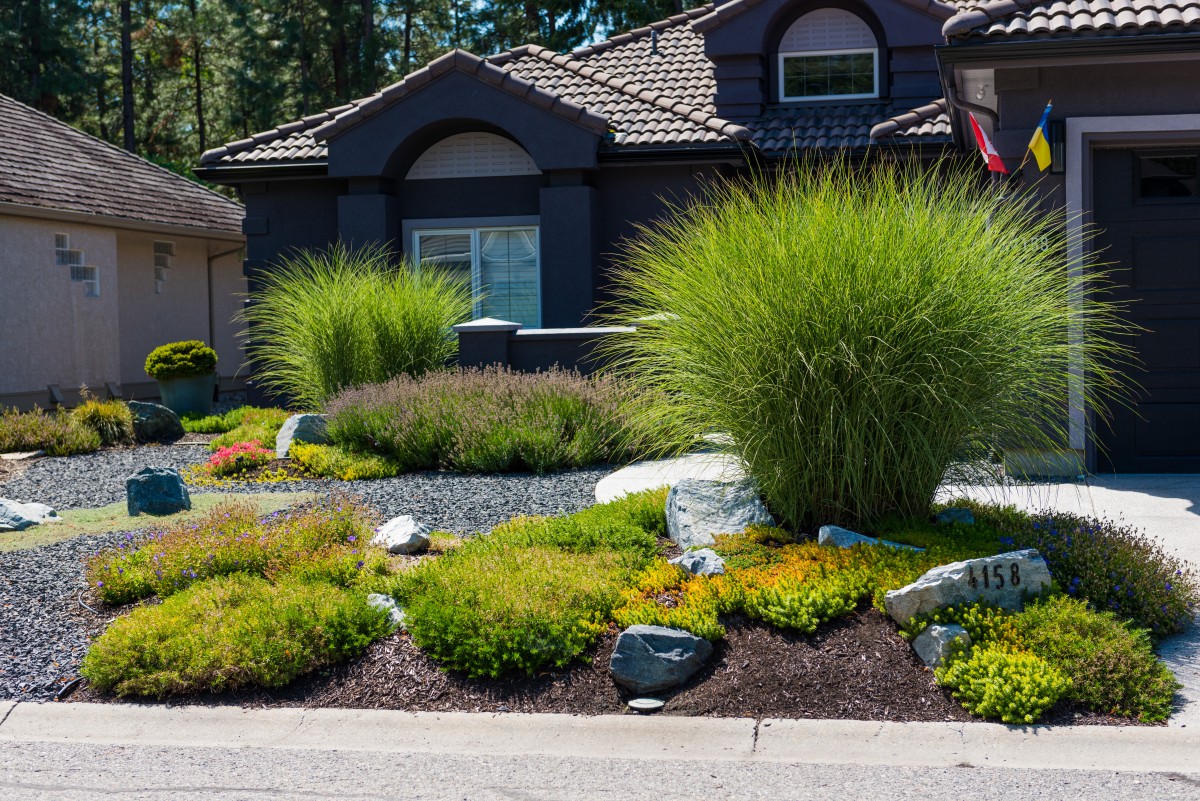
Three different flavours of water-efficient landscaping in Gallagher's Canyon, combining stone, mulch, drought-resistant species and drip irrigation systems.
Even more significant than the beautiful yards and striking gardens, though, is the degree to which Margo and her neighbours work together to create positive change. While all these homes put their own spin on things, no one is going it alone. Margo tells me stories of neighbours getting together to help one another haul stone and maintain gardens, of strata leaders coordinating with maintenance workers to ensure that common greenspaces are being irrigated appropriately, and of a neighbourhood gardening club arranging educational visits from the Okanagan Xeriscape Association.
In a place as drought prone as Kelowna, even small, individual steps can make a big difference when it comes to water conservation. But the impact of those steps is amplified when neighbours come together, support one another, and develop shared strategies for building water smart communities. That kind of collaboration is how small steps can help us tackle the big questions and challenges facing our changing valley.
To learn more about how you can get started making water smart changes in your community, and how the City can help offset the costs with free assessments and rebates, visit kelowna.ca/watersmart.
As the City’s Water Quality Supervisor, Ed Hoppe is passionate about water conservation and protecting our most important natural resource. With a background in analytical chemistry and more than 20 years’ experience as a professional chemist, Ed joined the Water Quality division at the City of Kelowna in 2017, where he oversees our wastewater, drinking water, storm water and source control labs, as well as the water conservation, cross control and customer care programs. Learn more about how Ed and his team protect the water supply and encourage thoughtful water use at kelowna.ca/water.


